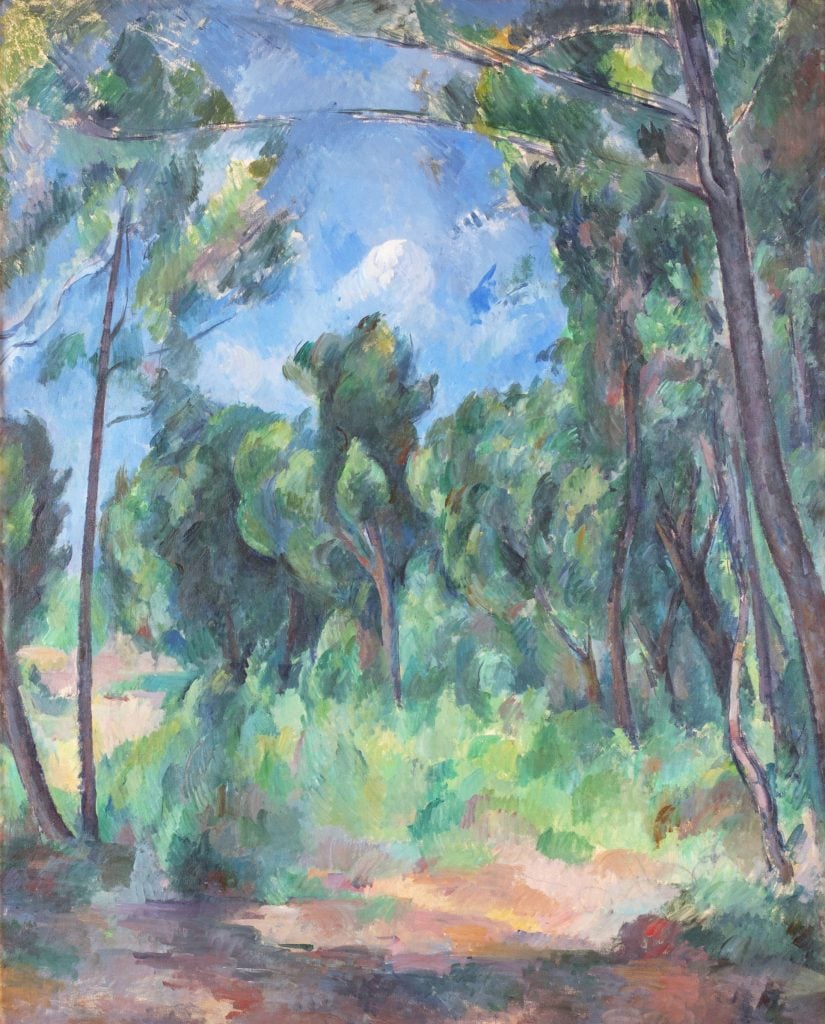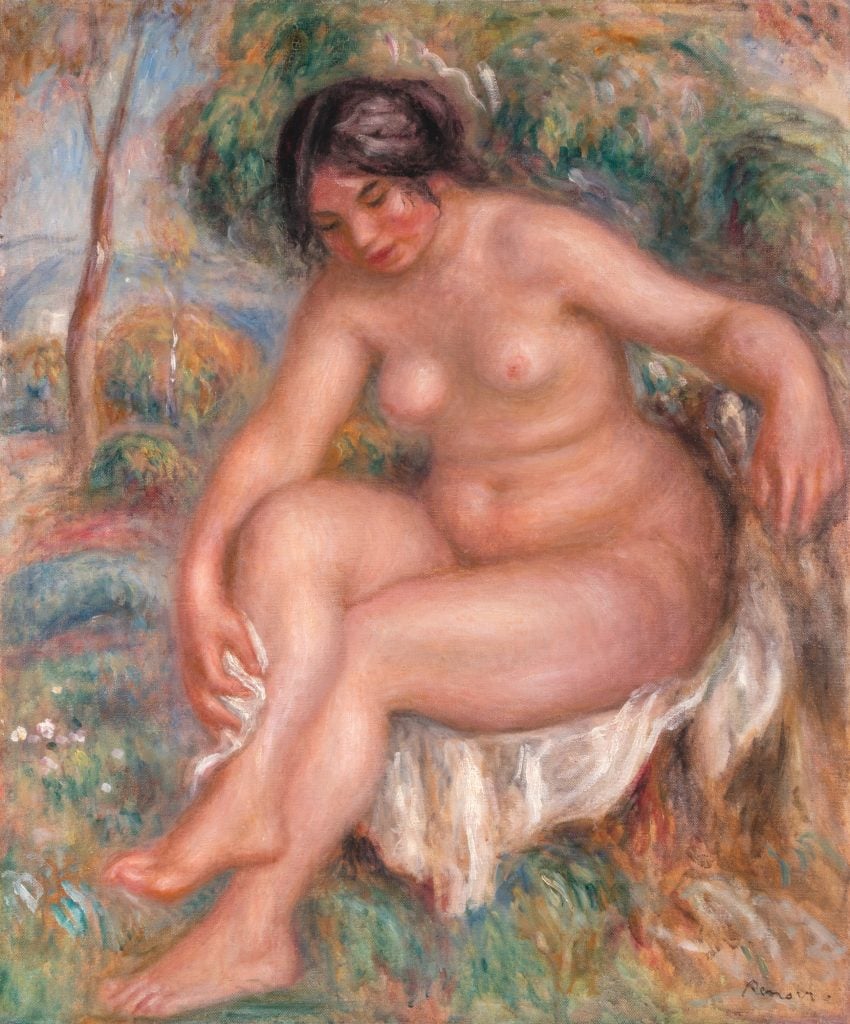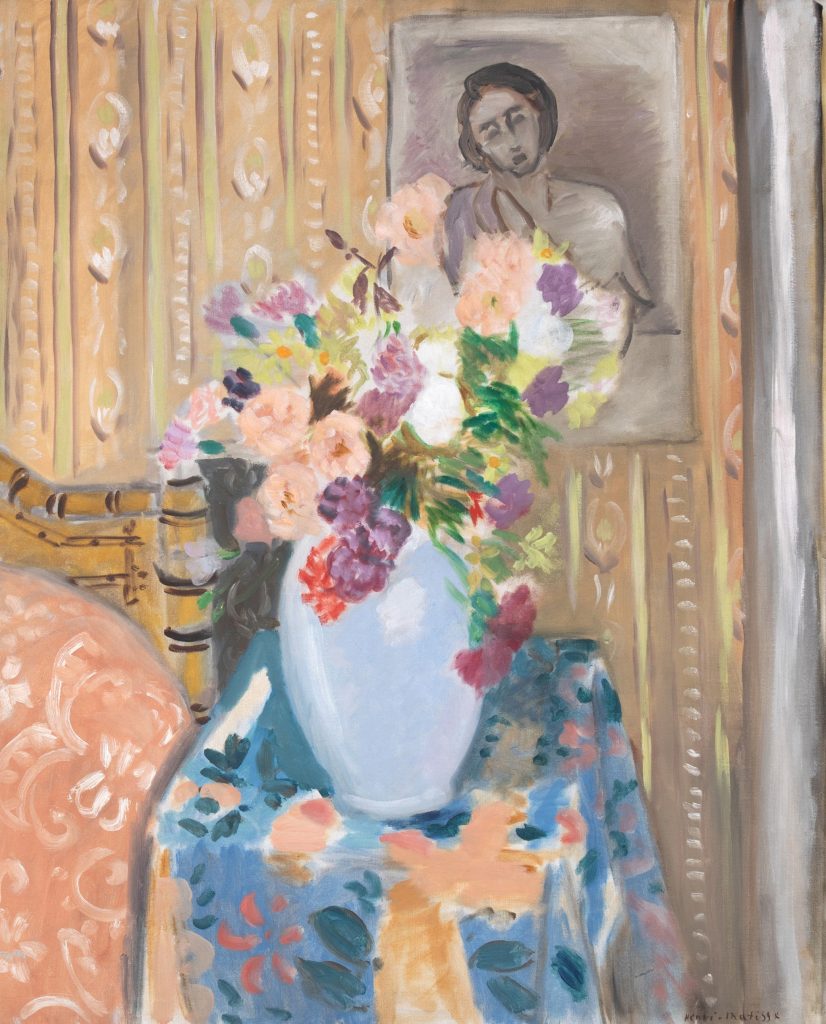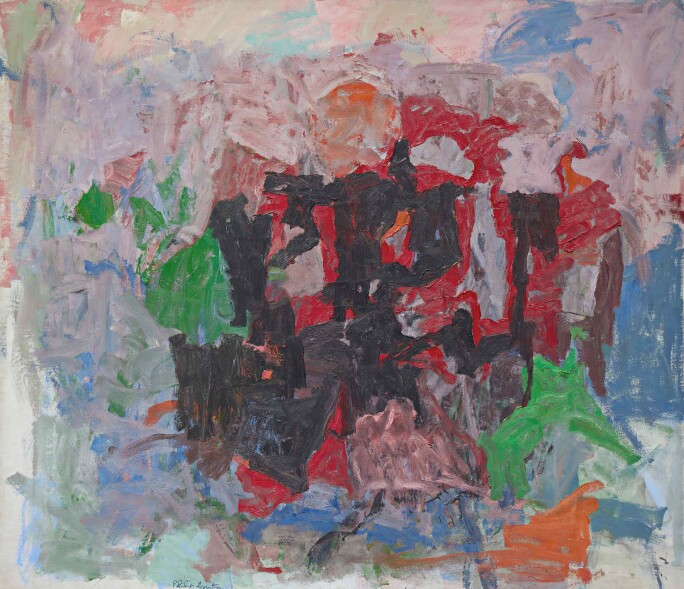The Toledo Museum of Art Will Deaccession Three Impressionist Paintings That Could Fetch More Than $60 Million at Sotheby’s

When Steve Cohen’s 1932 Picasso comes up for sale at Sotheby’s on May 17, it will be joined on the auction block by three Impressionist paintings from the collection of the Toledo Museum of Art (TMA), which could net as much as $64 million—the largest institutional deaccession of the season.
The consignment includes Paul Cézanne’s Clairière (The Glade) from around 1895, estimated at $30 million to $40 million; Henri Matisse’s Fleurs ou Fleurs devant un portrait (1923), estimated at $15 million to $20 million; and a late Pierre-Auguste Renoir, Nu s’essuyant (1923), estimated at $3 million to $4 million. All three are guaranteed by Sotheby’s.

Pierre-Auguste Renoir, Nu s’essuyant (1912). Courtesy of Sotheby’s.
Proponents say that deaccessions free up funds for improving or expanding a museum’s offerings. The TMA was “conceived from its founding as an institution that would be actively deaccessioning, and we have been deaccessioning for decades,” said director Adam M. Levine, who took the reins two years ago. “All of the proceeds will be used to create what will be a transformative endowment for art acquisition in perpetuity.”
He continued, “The American Alliance of Museums, the Association of Art Museum Directors and the International Council of Museums, all say that thoughtful deaccessioning is part of collections care,” adding that the TMA’s sale complies not only with these organizations’ regulations governing member institutions but also with its own foundational principles.
In an April 8 letter to TMA members, Levine explained that founders Edward Drummond Libbey and his wife Florence Scott left the museum acquisition funds on the condition that “artworks purchased with funds left by them may be sold so long as the proceeds are used to purchase other artworks.” This endowment is currently $40 million.
Levine stated that the museum would use the proceeds from the Sotheby’s sale “to create a new acquisition endowment, effectively doubling the Libbey Funds and leveling up our ability, in perpetuity, to broaden our collection with the highest quality works of art….These expanded funds will allow us to diversify our collection, seeking beauty without bias.”

Henri Matisse, Fleurs ou Fleurs devant un portrait (ca. 1924). Courtesy of Sotheby’s.
The works had been selected as a result of a months-long process which included reviews by Levine and TMA curators, the art committee and the board, which approved the sale unanimously.
“These are all historic works,” the director told Artnet News this week. ”And we do have other examples in the collection, other amazing and iconic examples.”
The museum will hold on to a superior Cézanne painting, Avenue at Chantilly (1888), which has been frequently requested for exhibitions, Levine said. It also retains a life-size late Renoir sculpture, as well an earlier painting, The Green Jardinière (1882). It will also keep Matisse’s Dancer Resting (1940), as well as numerous works on paper by the artist.

“Few artists have expressed such a depth of range in their artistic practice as Philip Guston, whose work spanned Depression Era murals to the heights of Abstract Expressionism in the 1950s to a later figurative resurgence that showcased his unique perspective. In Nile, Guston’s incredible sensitivities to composition are on full display, and the painting is not only a landmark achievement during the greatest period of transformation in his career, but also in the evolution of post-war abstract art.”
Michael Macaulay, Sotheby’s Senior Vice President, Contemporary Art
NEW YORK, 4 April 2022 – Making its first public appearance in four decades this Friday at Sotheby’s New Bond Street galleries in London, Philip Guston’s Abstract Expressionist masterpiece Nile from 1958 is a monumental work that represents the pinnacle of Guston’s abstract practice, and is among the small group of works that established Guston’s reputation as one of the premier artists of 20th century art. Coming to auction for the first time this spring in Sotheby’s Modern Evening Auction, Nile will be offered in tandem with several other exceptional works from the artist’s later, figurative period in the Contemporary Evening Auction, marking a significant moment for the market to celebrate the artist’s legacy as an undeniable master of the post-war period that will coincide with the highly-anticipated Philip Guston Now retrospective opening at the Museum of Fine Arts Boston this May.
For more than 40 years, the painting remained in the collection of Peter and Edith O’Donnell of Dallas, Texas, and will be sold in May to benefit the O’Donnell Foundation, whose philanthropic ethos continues Peter and Edith’s selfless legacy of passionately advancing a wide range of higher education causes; innovations in science, technology, engineering, and mathematics; medical research and public health programs; and an array of arts and culture initiatives. Since the Foundation was established in 1957, the O’Donnells were recognized with numerous accolades for their extraordinary and transformative contributions, which to date have totaled more than $900 million to a spectrum of extraordinary causes. Additional works from the O’Donnell Collection will be offered at Sotheby’s in May 2022 to support the Foundation.
Of the 29 works produced by Guston between 1956 and 1960, the pinnacle of his abstract expressionist output, there are 10 which stand above the rest as unquestioned masterpieces. Nile is one of these ten exemplary canvases, and one of only three remaining in private hands. The additional seven works are held in the collections of The Museum of Modern Art, New York; Whitney Museum of American Art, New York; Mildred Lane Kemper Art Museum, St. Louis; Hirshhorn Museum and Sculpture Garden, Washington, D.C.; San Francisco Museum of Modern Art (promised gift); The Phillips Collection, Washington, D.C.; and The Museum of Fine Arts, Houston.
The large-scale work is estimated to sell for $20/30 million during Sotheby’s Modern Evening Auction on 17 May – marking the highest auction estimate ever placed on a work by the artist.
Philip Guston’s Nile
Estimate $20/30 million
Executed at the heart of the artist’s esteemed abstract period during the late 1950s, Nile embodies Guston’s most radical period of transformation, when he developed an innovative working method that drastically affected his output. As a devoted student of the Italian Renaissance, a prolific traveler and reader, a music connoisseur, and an avid filmgoer, Guston was a formidable polymath whose art emerged from his depth of art historical knowledge, as well as a reservoir of diverse experiences and inspirations, including his work with the Depression era WPA and as a founding participant in the pioneering New York School.
It was during his period with his peers of the New York School that Guston developed his signature technique and style that is epitomized by Nile. While his contemporaries experimented with increasing the size of their canvases to create immersive experiences or increasing the size of their gestures, Guston increased his own proximity to the picture plane. Working so close that he lost all sense of space and depth - sometimes close enough for paint splatters to get in his eyes – Guston forged a new type of painterly intensity, reaching its apex in Nile.
Nile comes to auction at a time of renewed interest in Guston’s body of work. The Contemporary Evening Auction will feature two of his later figurative works, Remorse and Studio Celebration. Taken together, the May marquee auctions will present an in-depth overview of the best of his practice.
Nile will appear in a public exhibition for the first time in over forty years when it goes on view in Sotheby’s London galleries from 8 – 13 April, followed by Hong Kong from 24 – 27 April, before returning to New York from 6 – 17 May for exhibition ahead of our Modern Evening Auction on 17 May.